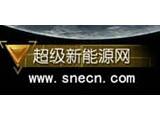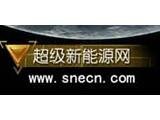The energy saving and new energy vehicle industry development plan (2011-2020) is about to be released. 18671079399
The long-awaited "Energy Saving and New Energy Vehicle Industry Development Plan (2011-2020)" is about to be released. Recently, Su Bo, Vice Minister of the Ministry of Industry and Information Technology (MIIT), clearly stated to the media that, "The 'Energy Saving and New Energy Vehicle Industry Development Plan,' led by MIIT, has been jointly submitted to the State Council along with other departments such as the National Development and Reform Commission (NDRC) and the Ministry of Finance, and will soon be approved and published." This statement gradually clarified the plan.
Previously, Miao Wei, Minister of MIIT, had indicated that the plan mainly focuses on the long-term development of new energy vehicles, including technical routes, goals, and specific measures in a relatively clear description. Industry insiders analyzed that this plan is China's first industry development plan targeting the new energy vehicle industry, which will guide the development of China's new energy vehicle industry for the next 10 years.
From this perspective, it is no surprise that this highly regarded "Plan" has drawn widespread attention from all sectors. Precisely because of this, relevant state ministries have exercised great caution before officially releasing this plan, leading to the postponement of the originally planned release in the middle of last year until now.
According to informed sources, this new energy vehicle plan contains three key points: First, the overall goal is for China’s new energy vehicle production and sales to reach the world's top by 2020; Second, it confirms the ultimate realization of plug-in hybrid electric vehicles and pure electric vehicles industrialization, while accelerating the research and development of fuel cell vehicle technology; Third, the government will invest 100 billion yuan.
It is reported that according to this plan, the Chinese government's fiscal investment will reach 100 billion yuan, dedicated to building a complete new energy vehicle industry chain. Among these funds, 50 billion yuan is set aside as a special fund for the development of energy-saving and new energy vehicles, focusing on supporting key technology R&D and industrialization; 30 billion yuan is used to support the demonstration and promotion of new energy vehicles; 20 billion yuan is allocated for promoting energy-saving vehicles, primarily hybrid vehicles. Additionally, 10 billion yuan is earmarked for supporting core automotive parts industry development, and 5 billion yuan for pilot city infrastructure construction.
However, all the above statements need verification before the final publication of the plan. Previously, in the heated discussions triggered by the draft of this plan, the most widely debated topic was undoubtedly the choice of power source for new energy vehicles. According to insider information, many views questioned the development prospects of pure electric vehicles, which was also the most important reason for the delay in the launch of this plan.
Following the currently disclosed information, this plan has already clearly defined that China's new energy vehicle development direction is dual-driven by hybrid and pure electric vehicles. The formulation of this policy is not without precedent; Miao Wei had previously stated, "The automobile industry will not be led around by the nose by power companies." He pointed out that currently, China’s new energy vehicles are still trying various methods, and which form is more convenient for users and more practical still needs exploration.
Precisely because of this change, the original "New Energy Vehicle Industry Development Plan (2011-2020)" eventually transformed into the current "Energy Saving and New Energy Vehicle Industry Development Plan (2011-2020)." "Our current proposal is that hybrid power is an energy-saving technology. In the present stage, reducing emissions and saving energy is the most realistic goal," explained relevant experts from the China Automobile Association.
Evidently, the final determination of the plan balances the interests of all parties involved. However, it must be acknowledged that regardless of the technology specified in the plan or the scale of government investment, consumer choice remains the key to the development of the new energy vehicle industry. According to multiple surveys, Chinese consumers have a high awareness and acceptance of new energy vehicles, but research shows that price-sensitive Chinese consumers are only willing to pay a small additional fee for battery-powered or hybrid vehicles.
A survey conducted by market research firm Synovate showed that Chinese car owners are willing to pay up to 4% more than their existing cars for new energy vehicles. Similarly, Deloitte's report also showed that nearly 80% of consumers were unwilling to pay more than 6,700 yuan over the price of traditional cars for electric vehicles. Meanwhile, more than half of the consumers expect the price of new energy vehicles to drop below 130,000 yuan after government subsidies.
"Now what is needed is a centrifugal force to break the current deadlock of low volume and high prices. Once the number of new energy vehicles on the market reaches a critical point, both the cost of the vehicles themselves and their supporting facilities and components will significantly decrease, making new energy vehicles unstoppable," said one expert. The very issuance of the plan itself is seen as a centrifugal force for the development of new energy vehicles.
Hubei Jiangnan Dongfeng Special Purpose Vehicles Co., Ltd. is a designated production enterprise by the National Development and Reform Commission (NDRC), the sole manufacturer with fire truck production qualifications from the Fire Bureau of the Ministry of Public Security in the capital of specialized vehicles, a modification plant affiliated with Dongfeng Motor Corporation, mainly producing and selling products such as fire trucks, tow trucks, aerial work platforms, side-opening box transport vehicles, water sprinklers, refueling trucks, chemical liquid transporters, flatbed transporters, mobile power supply vehicles, garbage trucks, among hundreds of varieties. All models have been listed in the national announcement directory, obtained ISO9001-2000 quality management system certification, and products have passed CCC certification.
Tel: 18671079399 0710-3328649 3328629 (Fax) Website: http://www.hbjndf.com
Email: [email protected]
Fire truck parameters, fire truck prices, fire truck pictures; water sprinkler parameters, water sprinkler prices, water sprinkler pictures; refueling truck parameters, refueling truck prices, refueling truck pictures; tow truck parameters, tow truck prices, tow truck pictures; aerial work platform parameters, aerial work platform prices, aerial work platform pictures; garbage truck parameters, garbage truck prices, garbage truck pictures; refrigerated truck parameters, refrigerated truck prices, refrigerated truck pictures; blasting materials transport truck parameters, blasting materials transport truck prices, blasting materials transport truck pictures; flatbed transporter parameters, flatbed transporter prices, flatbed transporter pictures.



